Home

Feeding from a Bottle

How to Sterilize Baby Bottles: The Ultimate Step-by-Step Tutorial
In this Article
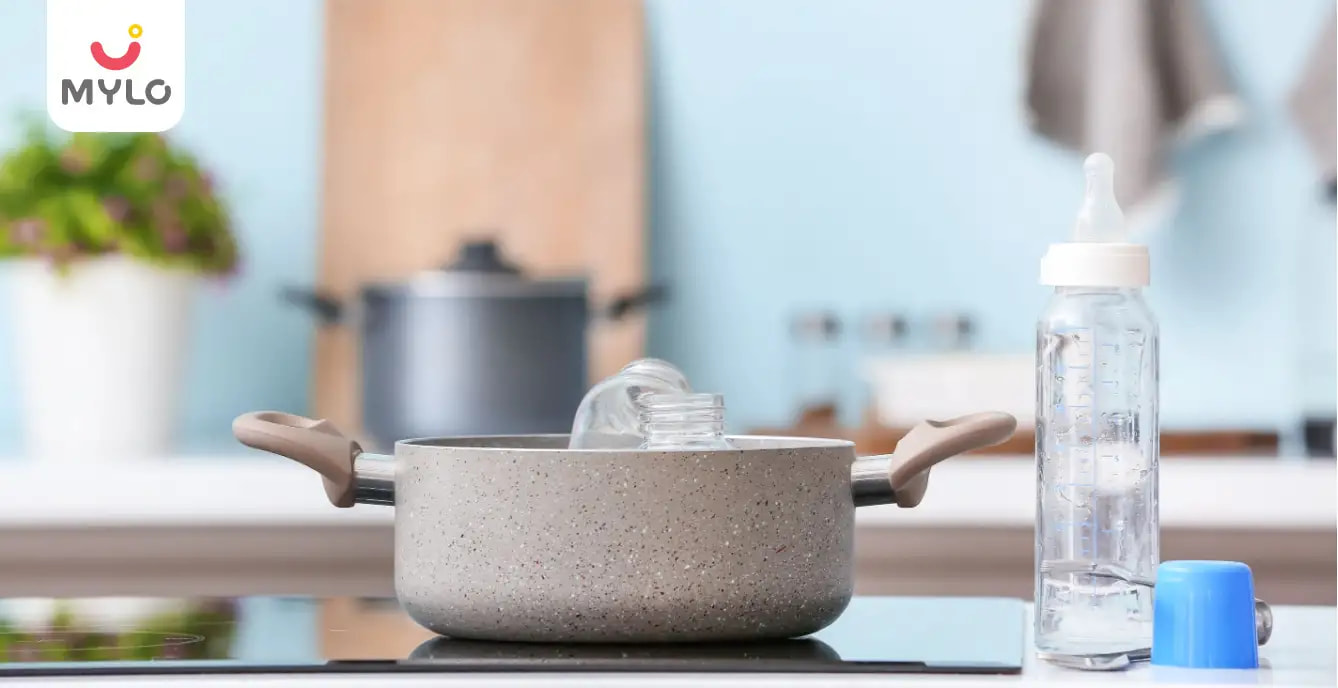
Feeding from a Bottle
How to Sterilize Baby Bottles: The Ultimate Step-by-Step Tutorial
Updated on 16 August 2023
From browsing how to apply the perfect winged eyeliner to searching how to sterilize baby bottles, Sameeksha’s life had taken a 360-degree turn when she gave birth to her baby girl, Vedika. As a new parent, she was eager to learn the best ways to provide the utmost care for her precious bundle of joy. So, she scoured the internet, spoke with experienced parents, and consulted pediatricians to gather every piece of advice on how to clean baby bottles.
So, whether you are an expectant parent eagerly preparing for your little one's arrival or a seasoned parent looking for a refresher, let’s join Sameeksha in her ultimate step-by-step tutorial on sterilizing baby bottles.
Why is sterilizing baby bottles important?
Sterilizing baby bottles is an essential step in ensuring the health and well-being of your little one. Here are five reasons why you should make sterilization a priority:
1. Preventing Bacterial Infections
Babies have delicate immune systems that are more susceptible to infections. Sterilizing baby bottles eliminates harmful bacteria, preventing potential illnesses such as diarrhea, vomiting, and stomach upset.
2. Removing Milk Residue
Milk residue can accumulate in baby bottles, leading to the growth of bacteria and mold. Sterilizing eliminates these residues, ensuring that your baby drinks from a clean and safe bottle.
3. Maintaining Nutrient Integrity
Sterilizing baby bottles helps preserve the integrity of nutrients present in breast milk or formula. Heat and steam sterilization methods effectively kill bacteria while retaining essential nutrients for your baby's growth and development.
4. Preventing Nipple Confusion
Sterilizing baby bottles is especially crucial if you are alternating between breastfeeding and bottle-feeding. A sterilized bottle reduces the risk of nipple confusion, ensuring a smooth transition for your baby between breast and bottle.
5. Peace of Mind
Sterilizing baby bottles provides parents with peace of mind, knowing that they are taking all necessary precautions to protect their baby's health. It is a simple yet effective way to promote a hygienic feeding environment.
You may also like : Feeding Bottles 101: Guide to Proper Cleaning, Sterilizing & Storage
How to clean baby feeding bottle?
Before sterilizing baby bottles, regular cleaning is essential to maintain their hygiene. Follow these steps to learn how to clean feeding bottle like a pro:
1. Disassemble
Take apart the bottle, separating the bottle, nipple, and any other removable parts, such as bottle rings or valves.
2. Rinse
Rinse all parts with warm water immediately after each feeding to remove any milk residue.
3. Wash
Wash the bottle and its components with warm soapy water using a bottle brush. Pay special attention to cleaning the nipple and any hard-to-reach areas.
4. Rinse Thoroughly
Rinse all parts under running water to remove any soap residue.
5. Air Dry
Allow all parts to air dry completely on a clean drying rack or paper towel. Avoid using a cloth towel, as it may introduce additional bacteria.
You may also like : Feeding bottle or sipper: Which is better for your baby?
How to Sterilize Feeding Bottles?
When it comes to how to sterilize baby bottles, there are three ways of sterilizing them- using boiling water, a stream sterilizer or a microwave. Here’s a step-by-step guide for each of these methods so that you can choose the one that suits you best.
Step-by-step guide to sterilizing baby bottles using boiling water
Sterilizing baby bottles using boiling water is a cost-effective and straightforward method. Follow these steps to ensure proper sterilization:
1. Clean the Bottles
Before sterilizing, wash the bottles, nipples, and other feeding equipment with warm soapy water. Rinse them thoroughly to remove any soap residue.
2. Prepare a Large Pot
Fill a large pot with enough water to submerge the bottles completely. Make sure the pot is clean and free from any contaminants.
3. Boil the Bottles
Place the washed bottles and nipples in the pot, ensuring they are fully submerged in water. Bring the water to a rolling boil and let it continue boiling for at least 5 minutes. This will effectively kill any bacteria present in the bottles.
4. Remove and Dry
Using tongs or a clean utensil, carefully remove the bottles from the boiling water. Place them on a clean paper towel or drying rack to air dry completely.
Step-by-step guide to sterilizing baby bottles using a steam sterilizer
Using a steam sterilizer is a convenient and efficient method to ensure proper sterilization of baby bottles. Follow these steps on how to clean baby feeding bottle using a steam sterilizer:
1. Clean the Bottles
Clean the bottles, nipples, and other feeding equipment with warm soapy water. Rinse them thoroughly to remove any soap residue.
2. Prepare the Steam Sterilizer
Follow the manufacturer's instructions to set up the steam sterilizer. Make sure it is clean and in proper working condition.
3. Load the Bottles
Place the cleaned bottles, nipples, and other feeding equipment in the steam sterilizer, ensuring they are arranged in a way that allows steam to reach all surfaces.
4. Start the Sterilization Cycle
Close the steam sterilizer and turn it on, following the manufacturer's instructions. Allow the sterilization cycle to complete, ensuring that the bottles remain sealed in the sterilizer until needed.
5. Remove and Cool
Once the sterilization cycle is complete, carefully remove the bottles from the steam sterilizer. Allow them to cool before handling or filling with breast milk or formula.
Step-by-step guide to sterilizing baby bottles using a microwave
Microwave sterilization offers a quick and convenient way to sterilize baby bottles. Here's a step-by-step guide on how to clean feeding bottle using a microwave:
1. Clean the Bottles
Wash the bottles, nipples, and other feeding equipment with warm soapy water. Rinse them thoroughly to remove any soap residue.
2. Prepare a Microwave-Safe Container
Place the cleaned bottles and nipples in a microwave-safe container. Make sure the container is suitable for microwave use and free from any contaminants.
3. Add Water
Fill the container with enough water to completely submerge the bottles. The water acts as a medium to generate steam for sterilization.
4. Microwave Sterilization
Place the container with the bottles and water in the microwave. Set the microwave to the highest power level and heat for approximately 2-4 minutes, depending on the wattage of your microwave. Follow the manufacturer's instructions for precise timing.
5. Cool and Dry
Carefully remove the container from the microwave using oven mitts or a towel. Allow the bottles to cool before handling or filling with breast milk or formula. Once cooled, air dry the bottles on a clean paper towel or drying rack.
How often should you sterilize baby bottles?
The frequency of sterilizing baby bottles depends on your baby's age and overall health. Here are general guidelines:
1. Newborns
For newborns, it is recommended to sterilize bottles before each use, at least for the first few months. Their immune systems are still developing, and sterilization helps minimize the risk of infections.
2. 3 to 6 months
As your baby grows, their immune system becomes stronger. Sterilizing bottles once a day or after every few uses is usually sufficient.
3. 6 months and older
By this stage, your baby's immune system is more robust. You can transition to thoroughly cleaning the bottles with hot soapy water and rinsing them well. Sterilization can be done once a week or as needed.
It's important to note that if your baby is premature, has a weakened immune system, or has been sick, you may need to continue sterilizing bottles more frequently.
Common mistakes to avoid when sterilizing baby bottles
While learning how to sterilize feeding bottles might seem like a simple process, here are some common mistakes to avoid to ensure proper sterilization:
-
Always clean the bottles thoroughly before sterilizing.
-
Whether you are using boiling water, steam sterilizer, or microwave sterilization, it is crucial to follow the manufacturer's instructions.
-
Proper spacing between bottles allows steam or boiling water to reach all surfaces and ensures thorough sterilization.
-
Once sterilized, avoid touching the inside of the bottle or nipple.
-
After sterilizing, store the bottles and nipples in a clean and covered container or bag.
FAQs
1. Do I need to sterilize bottles every time?
For newborns and infants up to a few months old, it is recommended to sterilize bottles before each use. As your baby grows, you can transition to sterilizing bottles once a day or after every few uses.
2. Is it safe to boil plastic baby bottles?
Boiling plastic baby bottles is generally safe if the bottles are BPA-free and made from materials specifically designed for high-heat sterilization. Always check the manufacturer's instructions to ensure that the bottles are suitable for boiling.
3. Do I need to sterilize breast milk bottles?
Yes, it is recommended to sterilize bottles used for storing expressed breast milk, especially for newborns and infants.
Key Takeaways
Sterilizing baby bottles is a crucial step in promoting a hygienic feeding environment for your little one. Whether you choose to sterilize using boiling water, a steam sterilizer, or a microwave, following the step-by-step guides provided on how to sterilize baby bottles will help eliminate harmful bacteria and keep your baby safe. By incorporating regular sterilization and cleaning practices, you can provide the best possible start for your baby's health and well-being.
References
1. Renfrew MJ, McLoughlin M, McFadden A. (2008). Cleaning and sterilisation of infant feeding equipment: a systematic review. Public Health Nutr.
2. Lystad A. (1973). Hvordan bør spedbarns flasker og smokker rengjøres og desinfiseres på beste måte [Which method is best for cleaning and sterilizing baby bottles and pacifiers?]. Tidsskr Nor Laegeforen.



Written by
Madhavi Gupta
Dr. Madhavi Gupta is an accomplished Ayurvedic doctor specializing in Medical content writing with an experience of over 10 years.
Read MoreGet baby's diet chart, and growth tips

Related Articles
Related Questions
Influenza and boostrix injection kisiko laga hai kya 8 month pregnancy me and q lagta hai ye plz reply me

Hai.... My last period was in feb 24. I tested in 40 th day morning 3:30 .. That is faint line .. I conculed mylo thz app also.... And I asked tha dr wait for 3 to 5 days ... Im also waiting ... Then I test today 4:15 test is sooooo faint ... And I feel in ma body no pregnancy symptoms. What can I do .

Baby kicks KB Marta hai Plz tell mi

PCOD kya hota hai

How to detect pcos

Related Topics
RECENTLY PUBLISHED ARTICLES
our most recent articles

Diet & Nutrition
What to eat when trying to conceive
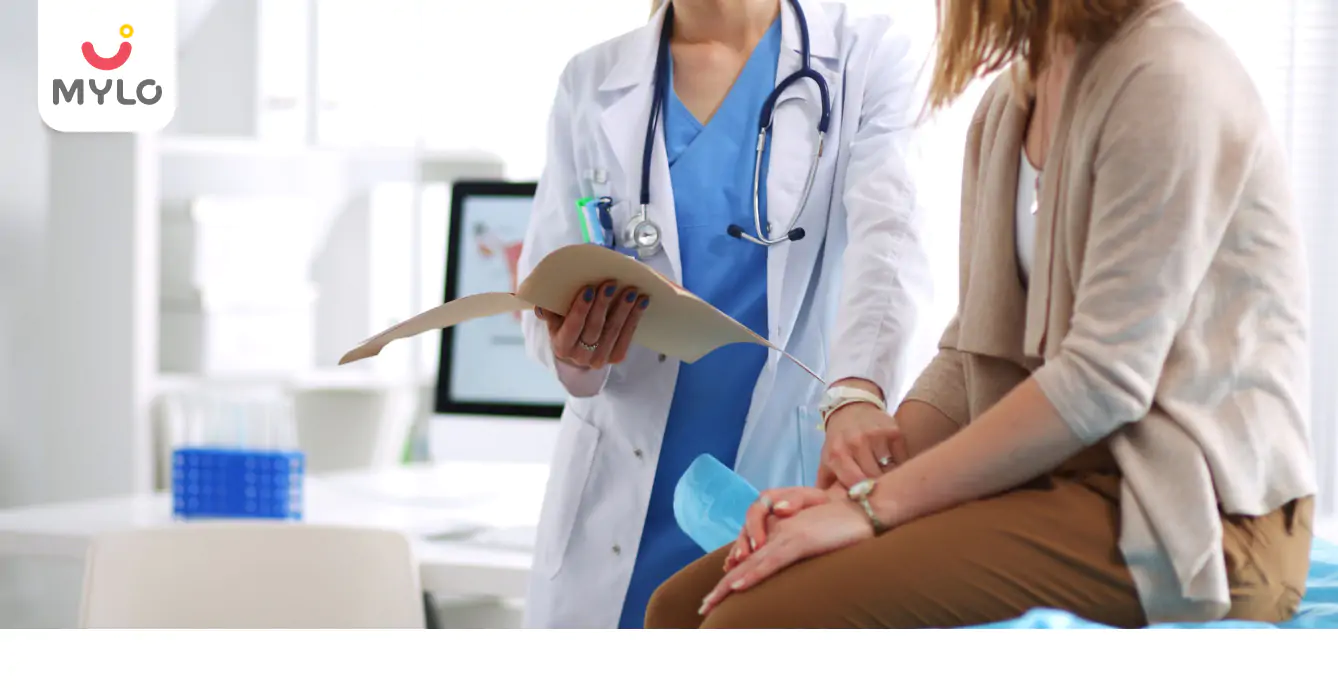
White Discharge
White Discharge After IUI: Is It Normal & When to See a Doctor
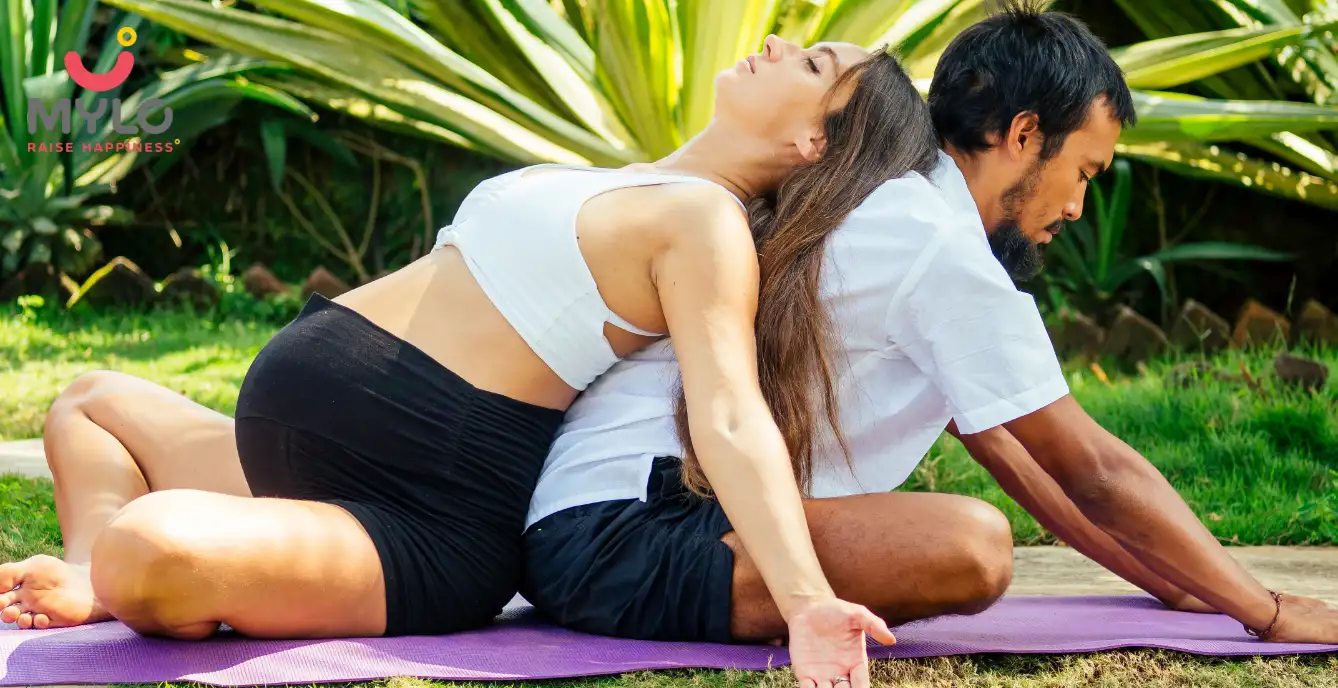
Diet & Exercises Your Wife Can Follow During Pregnancy
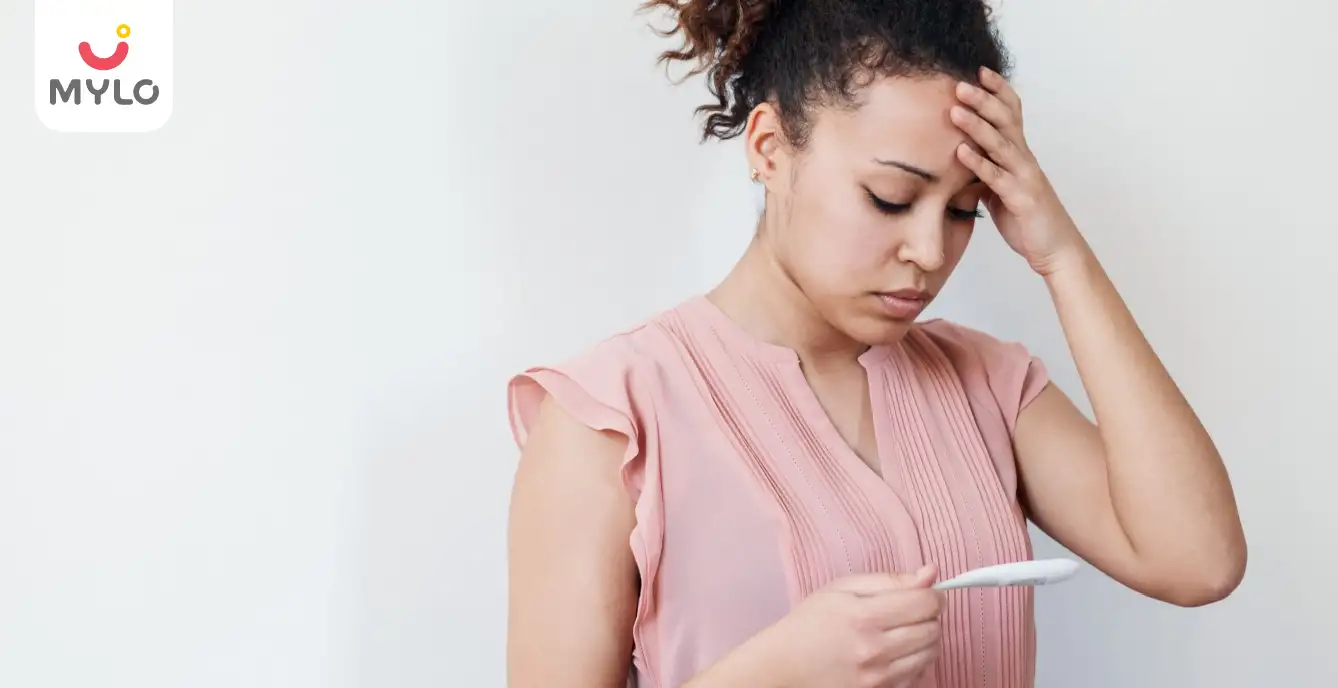
Can a diet plan help deal with infertility in women and boost the chances of conception?
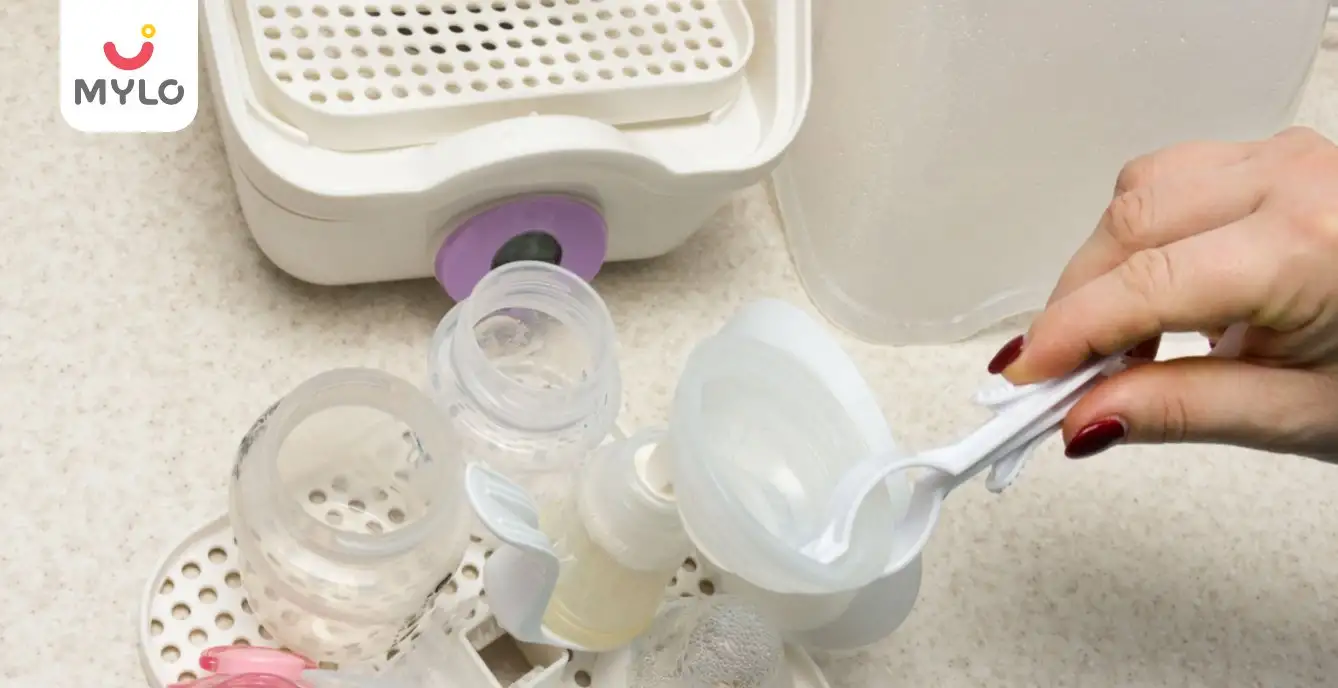
Pumping
How to Sterilize Breast Pump: A Comprehensive Guide for New Moms
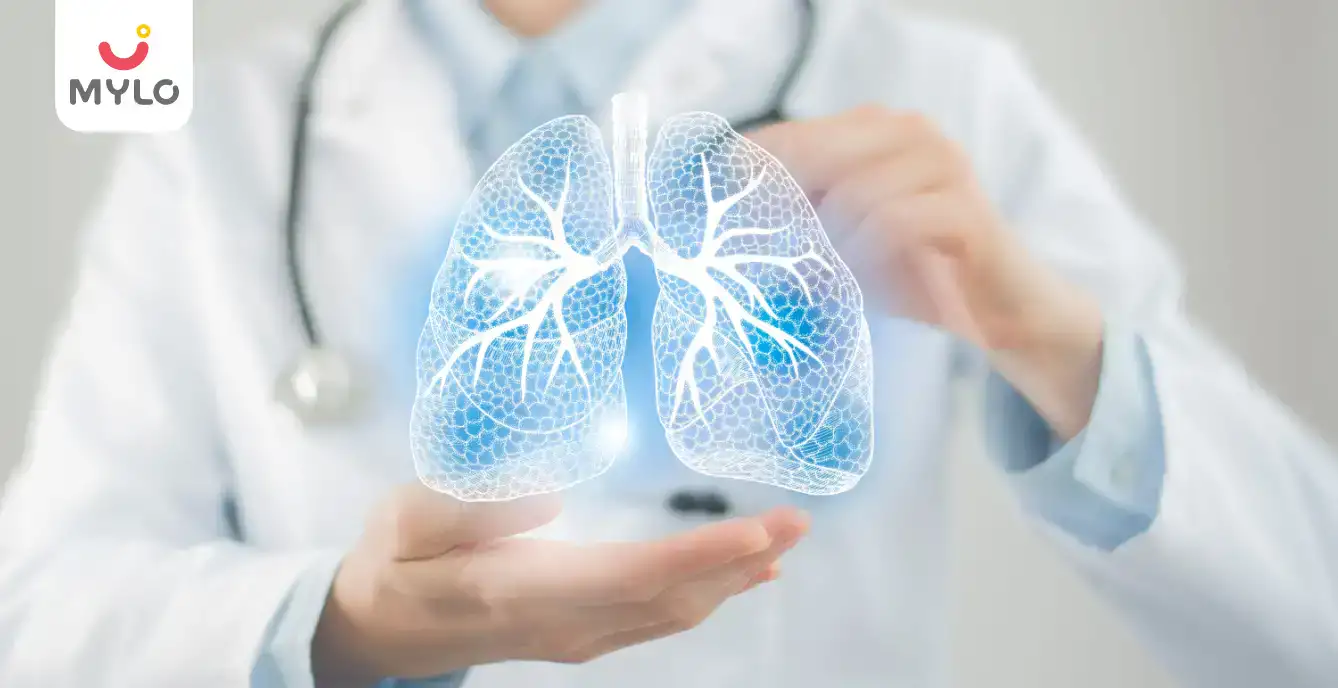
Medications
Bronchiectasis Meaning in Hindi | ब्रोन्किइक्टेसिस क्या होता है?
- The Ultimate Guide to Teej 2023: Celebrations, Traditions, and Dates
- Should I Pee After Sex if Trying to Get Pregnant? And 5 Other FAQs
- Menorrhagia: A Guide to Understanding Heavy Period Bleeding (Part 1)
- Indigestion and Heartburn During Pregnancy
- Understanding Follicular Study: A Comprehensive Guide to Female Fertility
- Maternity Fashion: How to Dress in Style in Each Trimester of Your Pregnancy?
- Oligomenorrhea: What Every Woman Needs to Know About Irregular Periods
- Can a Woman with Thyroid Problems Get Pregnant: Conceiving Against the Odds
- Adenomyosis Vs Endometriosis: How to Spot the Symptoms and Seek Early Intervention
- Fertility Test for Men and Women: What to Expect and Next Steps
- Reason for Irregular Periods After Marriage: A Comprehensive Guide
- How Soon Can You Get Pregnant After Stopping the Pill?
- Watery Semen: Is It Normal or a Sign of an Underlying Condition?
- Embryo Transfer: The Ultimate Guide to Procedure, Success Rates and FAQs


AWARDS AND RECOGNITION

Mylo wins Forbes D2C Disruptor award

Mylo wins The Economic Times Promising Brands 2022
AS SEEN IN
















- Mylo Care: Effective and science-backed personal care and wellness solutions for a joyful you.
- Mylo Baby: Science-backed, gentle and effective personal care & hygiene range for your little one.
- Mylo Community: Trusted and empathetic community of 10mn+ parents and experts.
Product Categories
baby carrier | baby soap | baby wipes | stretch marks cream | baby cream | baby shampoo | baby massage oil | baby hair oil | stretch marks oil | baby body wash | baby powder | baby lotion | diaper rash cream | newborn diapers | teether | baby kajal | baby diapers | cloth diapers |








